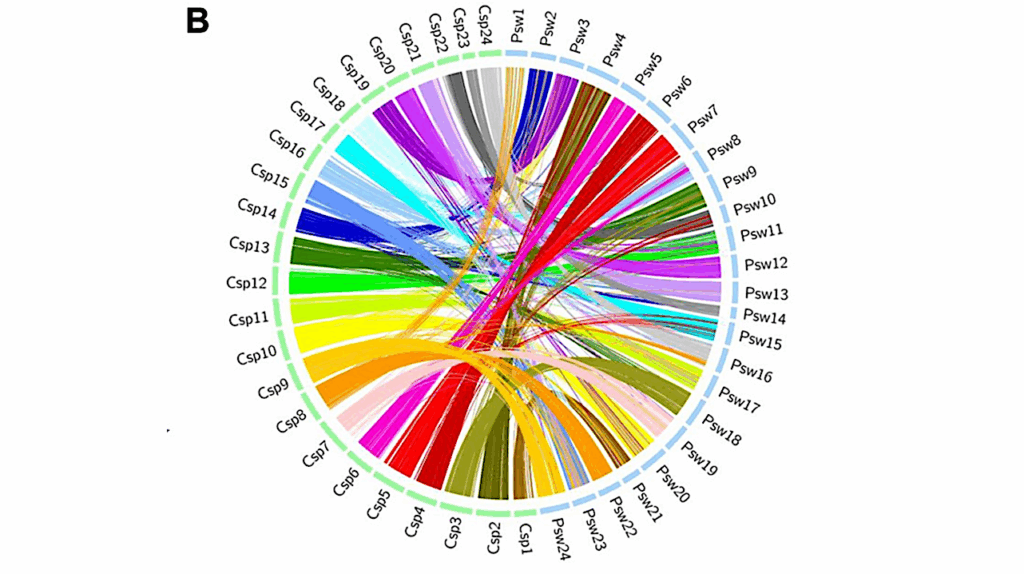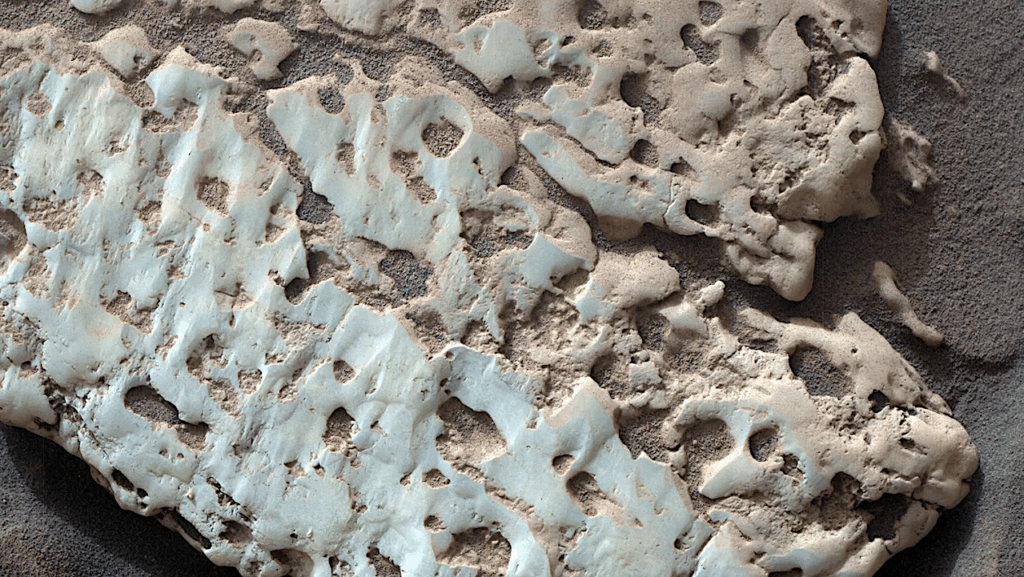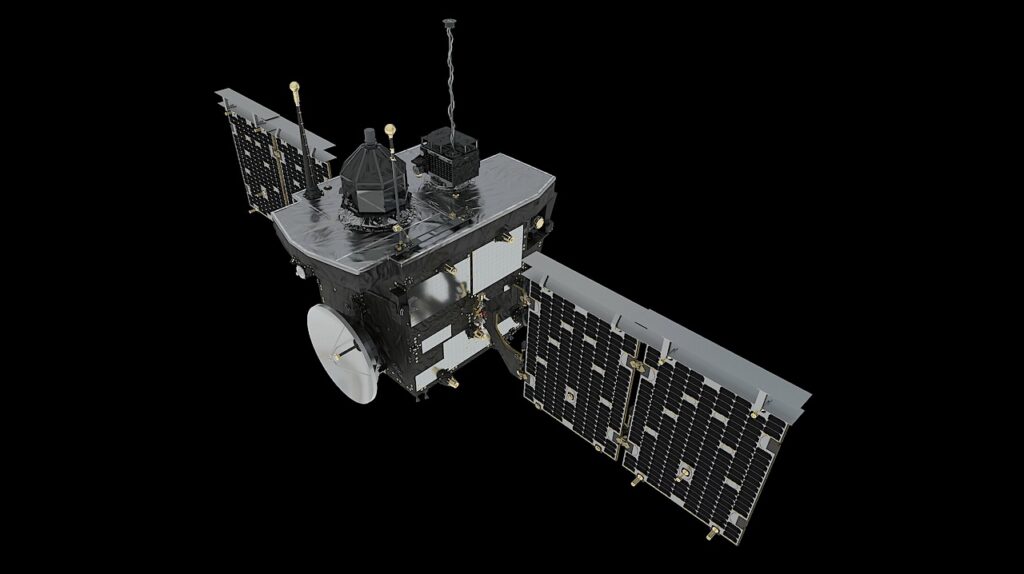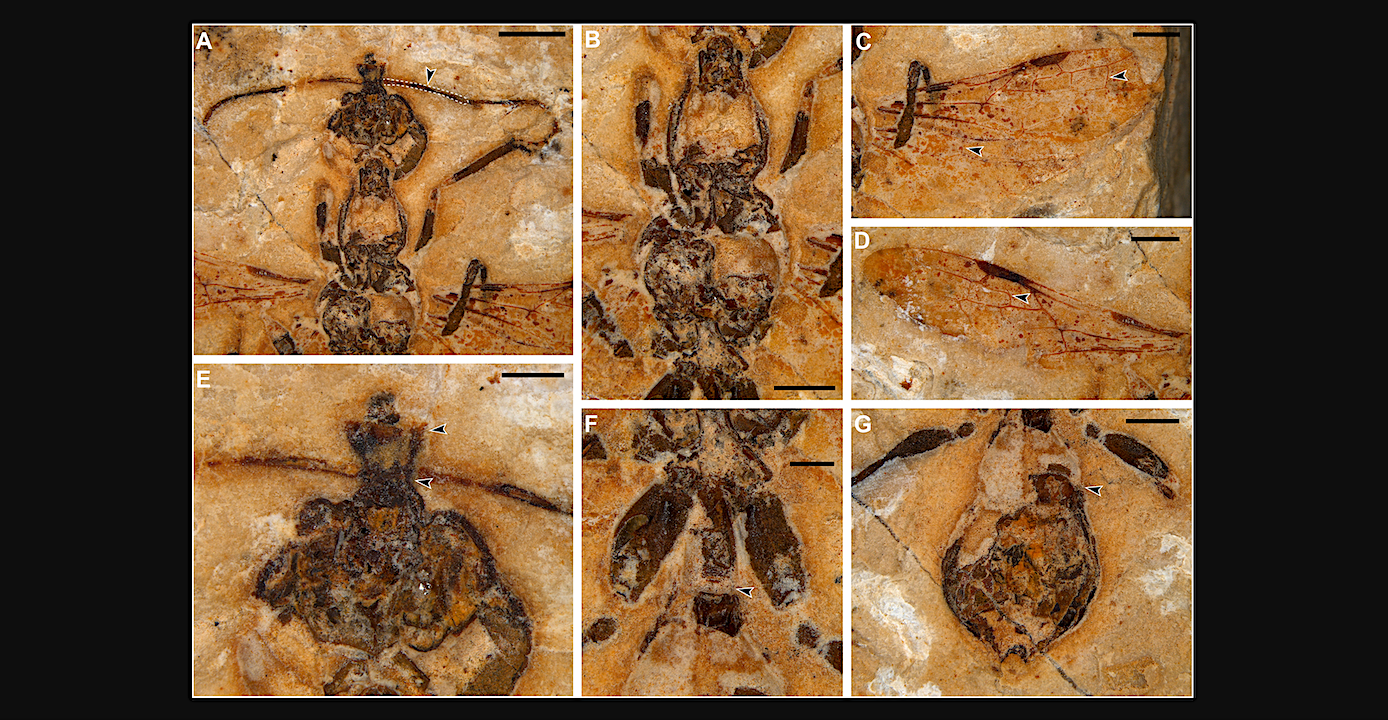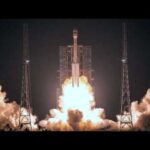Now Reading: Building Machine Learning Challenges for Anomaly Detection in Science
-
01
Building Machine Learning Challenges for Anomaly Detection in Science
Building Machine Learning Challenges for Anomaly Detection in Science
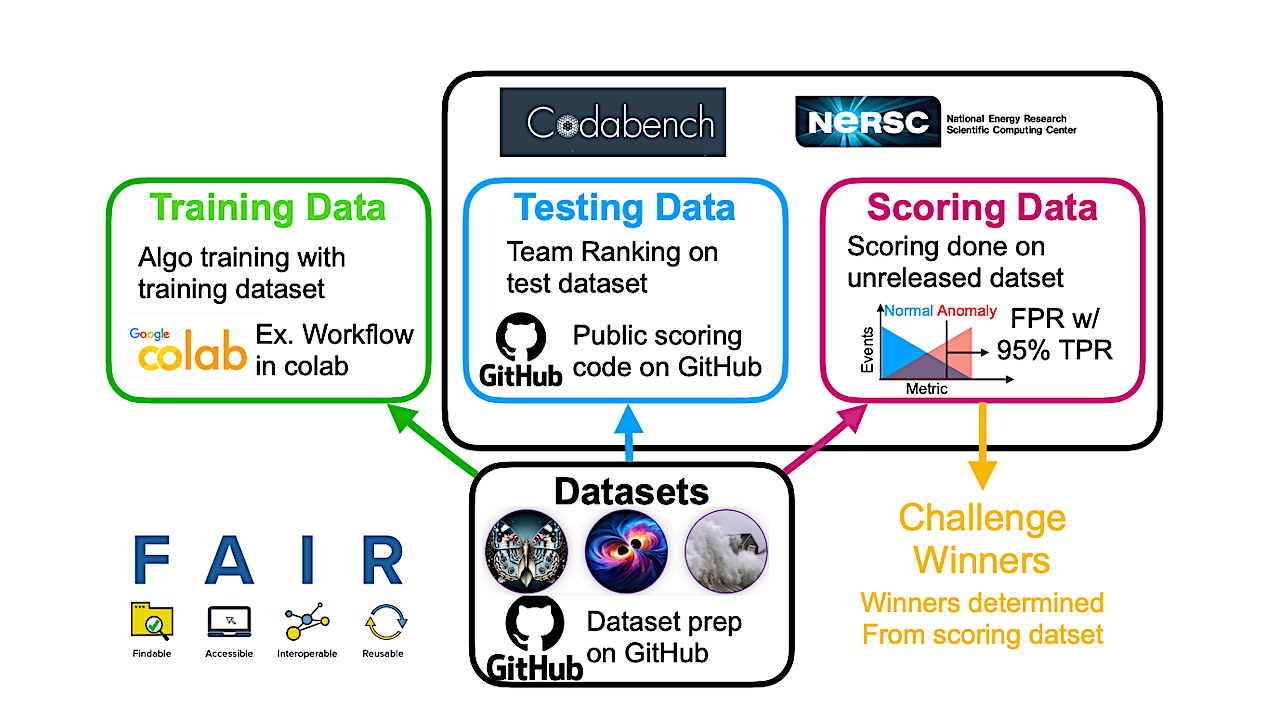

Overview of the flow of the ML challenge, and the datasets used for training. All preparation was explicitly made following FAIR principles, with the curation and data cleaning workflows stored on GitHub. The Codabench platform and NERSC computing cluster are used for scoring and ranking of submissions. — cs.LG
Editor’s note: When we send Away Teams on Astrobiology and Astrogeology expeditions to other worlds they are going to need to be rather self-contained. Indeed, the bulk of their preliminary research may well be done offworld. Having the best, most compact tools is of paramount importance. This goes for tricorders to be used on field trips and equipment to be used back at Base Camp. Having expert systems, AI, Machine Intelligence etc. embedded within our tricorders or as stand-alone systems at a research base used by multiple sensors and humans will be of great utility. Again, since researchers will be limited in terms of bandwidth and latency with human researches and analytical capabilities back on Earth, anything on hand at offworld research locations will greatly expedite and focus research.
Scientific discoveries are often made by finding a pattern or object that was not predicted by the known rules of science.
Oftentimes, these anomalous events or objects that do not conform to the norms are an indication that the rules of science governing the data are incomplete, and something new needs to be present to explain these unexpected outliers.
The challenge of finding anomalies can be confounding since it requires codifying a complete knowledge of the known scientific behaviors and then projecting these known behaviors on the data to look for deviations.
When utilizing machine learning, this presents a particular challenge since we require that the model not only understands scientific data perfectly but also recognizes when the data is inconsistent and out of the scope of its trained behavior.
In this paper, we present three datasets aimed at developing machine learning-based anomaly detection for disparate scientific domains covering astrophysics, genomics, and polar science.
We present the different datasets along with a scheme to make machine learning challenges around the three datasets findable, accessible, interoperable, and reusable (FAIR).
Furthermore, we present an approach that generalizes to future machine learning challenges, enabling the possibility of large, more compute-intensive challenges that can ultimately lead to scientific discovery.
Elizabeth G. Campolongo, Yuan-Tang Chou, Ekaterina Govorkova, Wahid Bhimji, Wei-Lun Chao, Chris Harris, Shih-Chieh Hsu, Hilmar Lapp, Mark S. Neubauer, Josephine Namayanja, Aneesh Subramanian, Philip Harris, Advaith Anand, David E. Carlyn, Subhankar Ghosh, Christopher Lawrence, Eric Moreno, Ryan Raikman, Jiaman Wu, Ziheng Zhang, Bayu Adhi, Mohammad Ahmadi Gharehtoragh, Saúl Alonso Monsalve, Marta Babicz, Furqan Baig, Namrata Banerji, William Bardon, Tyler Barna, Tanya Berger-Wolf, Adji Bousso Dieng, Micah Brachman, Quentin Buat, David C.Y. Hui, Phuong Cao, Franco Cerino, Yi-Chun Chang, Shivaji Chaulagain, An-Kai Chen, Deming Chen, Eric Chen, Chia-Jui Chou, Zih-Chen Ciou, Miles Cochran-Branson, Artur Cordeiro Oudot Choi, Michael Coughlin, Matteo Cremonesi, Maria Dadarlat, Peter Darch, Malina Desai, Daniel Diaz, Steven Dillmann, Javier Duarte, Isla Duporge, Urbas Ekka, Saba Entezari Heravi, Hao Fang, Rian Flynn, Geoffrey Fox, Emily Freed, Hang Gao, Jing Gao, Julia Gonski, Matthew Graham, Abolfazl Hashemi, Scott Hauck, James Hazelden, Joshua Henry Peterson, Duc Hoang, Wei Hu, Mirco Huennefeld, David Hyde, Vandana Janeja, Nattapon Jaroenchai, Haoyi Jia, Yunfan Kang, Maksim Kholiavchenko, Elham E. Khoda, Sangin Kim, Aditya Kumar, Bo-Cheng Lai, Trung Le, Chi-Wei Lee, JangHyeon Lee, Shaocheng Lee, Suzan van der Lee, Charles Lewis, Haitong Li, Haoyang Li, Henry Liao, Mia Liu, Xiaolin Liu, Xiulong Liu, Vladimir Loncar, Fangzheng Lyu, Ilya Makarov, Abhishikth Mallampalli Chen-Yu Mao, Alexander Michels, Alexander Migala, Farouk Mokhtar, Mathieu Morlighem et al. (50 additional authors not shown)
Comments: 18 pages 6 figures to be submitted to Nature Communications
Subjects: Machine Learning (cs.LG); Instrumentation and Methods for Astrophysics (astro-ph.IM)
Cite as: arXiv:2503.02112 [cs.LG] (or arXiv:2503.02112v1 [cs.LG] for this version)
https://doi.org/10.48550/arXiv.2503.02112
Focus to learn more
Submission history
From: Philip Harris
[v1] Mon, 3 Mar 2025 22:54:07 UTC (37,668 KB)
https://arxiv.org/abs/2503.02112
Astrobiology,
Stay Informed With the Latest & Most Important News
Previous Post
Next Post
-
 01From Polymerization-Enabled Folding and Assembly to Chemical Evolution: Key Processes for Emergence of Functional Polymers in the Origin of Life
01From Polymerization-Enabled Folding and Assembly to Chemical Evolution: Key Processes for Emergence of Functional Polymers in the Origin of Life -
 02Panasonic Leica Summilux DG 15mm f/1.7 ASPH review
02Panasonic Leica Summilux DG 15mm f/1.7 ASPH review -
 03Two Black Holes Observed Circling Each Other for the First Time
03Two Black Holes Observed Circling Each Other for the First Time -
 04How New NASA, India Earth Satellite NISAR Will See Earth
04How New NASA, India Earth Satellite NISAR Will See Earth -
 05And Thus Begins A New Year For Life On Earth
05And Thus Begins A New Year For Life On Earth -
 06Astronomy Activation Ambassadors: A New Era
06Astronomy Activation Ambassadors: A New Era -
07SpaceX launch surge helps set new global launch record in 2024












